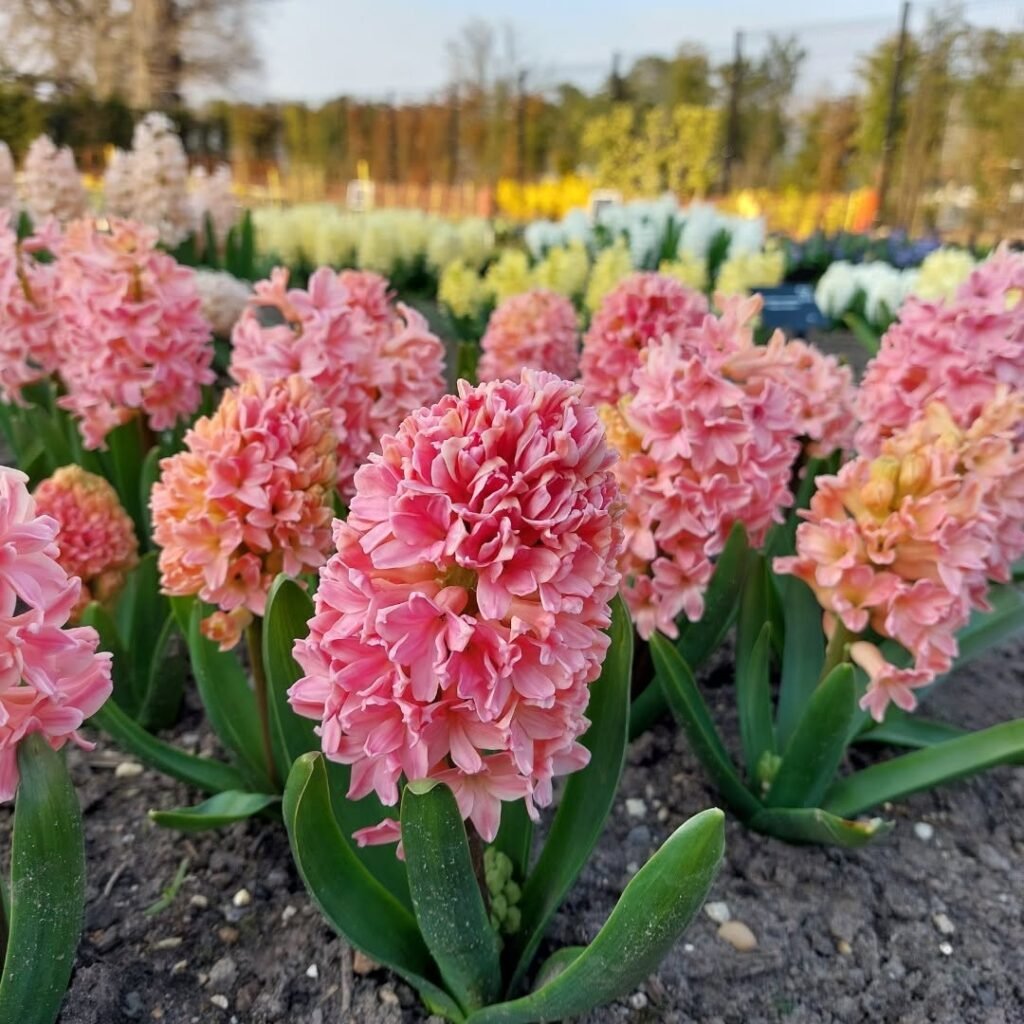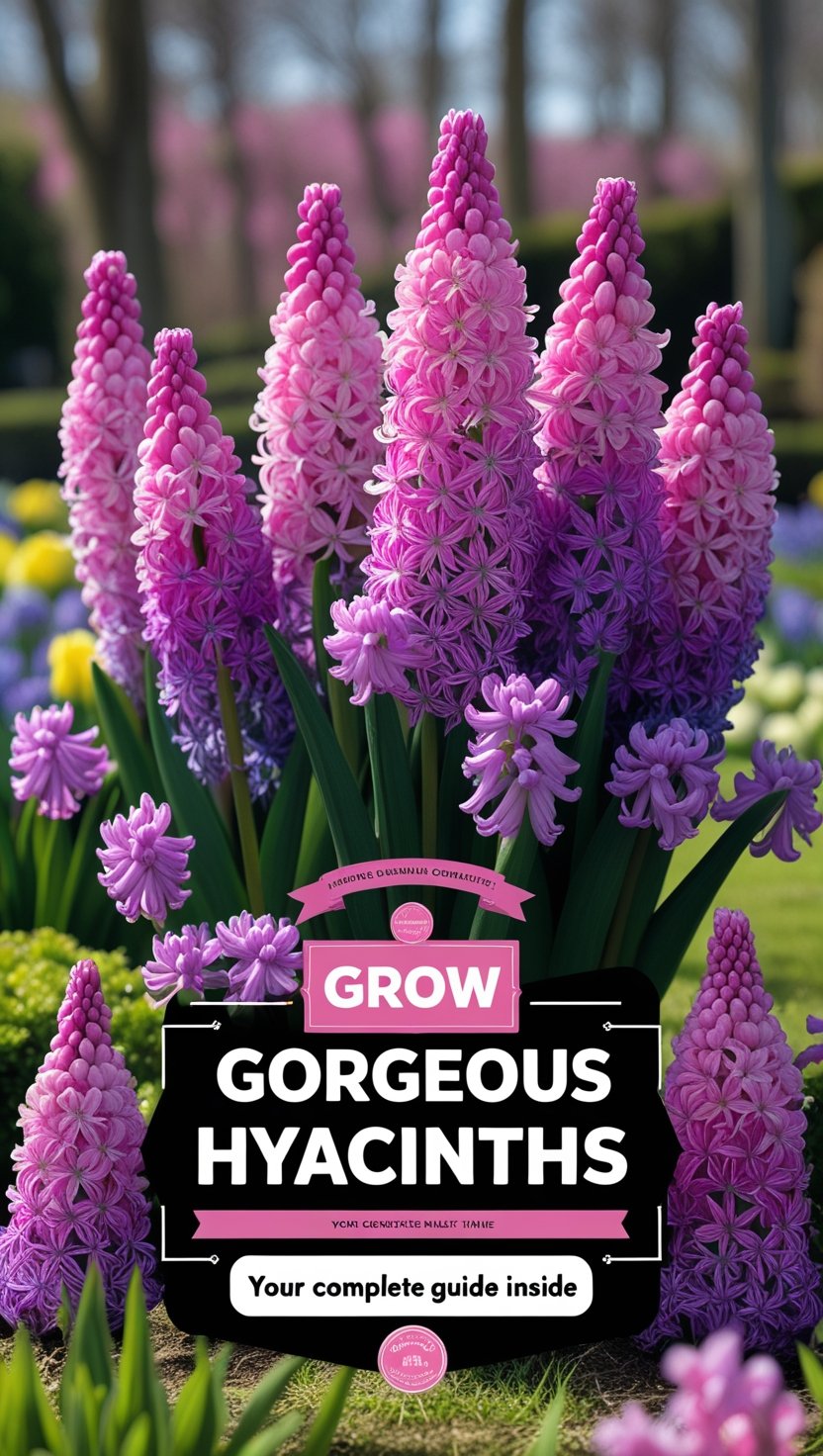Learn all about Hyacinthus orientalis magnificus—care tips, uses, benefits, and more. Perfect for USA gardeners wanting stunning spring blooms!

Hey there, fellow garden enthusiasts! I’m Ashley Scott, and with 10 years of gardening experience under my belt, I’ve fallen in love with many plants—but few are as captivating as Hyacinthus orientalis magnificus. Whether you’re a seasoned gardener or just starting out, this guide will walk you through everything you need to know about this gorgeous spring bloomer. From its common name to its care tips, I’ve got you covered. Let’s dig in!
What is Hyacinthus orientalis?

Hyacinthus orientalis, often simply called the hyacinth, is a spring-flowering bulb that’s famous for its vibrant colors and sweet fragrance. Native to the eastern Mediterranean, it’s a member of the Asparagaceae family. The “magnificus” part? Well, it might not be an official cultivar name (trust me, I checked!), but it’s a fitting way to describe the plant’s show-stopping blooms. Picture clusters of star-shaped flowers in shades of purple, pink, white, or blue—it’s pure garden magic.
Oh, and if you’re wondering about the Hyacinthus orientalis pronunciation, it’s pretty straightforward: say “hi-uh-SIN-thus or-ee-en-TAY-lis.” Easy enough, right? Now you can impress your friends at the next garden club meeting!
Uses and Benefits of Hyacinthus orientalis

So, what’s the big deal with Hyacinthus orientalis uses? For starters, it’s a rockstar in the garden. I’ve used hyacinths to line walkways, brighten up flower beds, and even force them indoors for a burst of winter color. Their fragrance is a huge bonus—plant them near your porch, and you’ll be greeted with a heavenly scent every spring.
Beyond looks and smell, hyacinths have some cultural perks too. They’re often linked to renewal and beauty, making them a popular gift. Want to learn more about fragrant blooms? Check out my article on Fragrant Flowers over at my site, USA Garden Hub.
Can You Grow Hyacinthus orientalis from Seeds?
Now, let’s talk Hyacinthus orientalis seeds. Here’s the thing: growing hyacinths from seeds is possible, but it’s not the most common way to go. It takes patience—up to 5 or 6 years for blooms to appear! Most folks (myself included) prefer bulbs because they’re faster and more reliable. That said, if you’re up for the challenge, sow seeds in well-draining soil in fall, keep them cool, and wait it out. For quicker results, stick with bulbs—I’ll cover planting those in a bit.
How to Care for Hyacinthus orientalis
Caring for Hyacinthus orientalis care is pretty simple, even if you’re new to gardening. Here’s what I’ve learned over the years:
- Soil: Hyacinths love well-draining soil. I mix in some compost to keep it rich but loose.
- Light: Full sun to partial shade works best. In my Zone 6 garden, they thrive with morning sun.
- Water: Keep the soil moist during growth, but don’t overdo it—soggy bulbs rot fast.
- Planting: In fall (September to November), plant bulbs 4-6 inches deep and 4 inches apart, pointy end up. They’re hardy in USDA zones 4-8, perfect for most of the USA.
- After Blooming: Once the flowers fade, let the leaves die back naturally to feed next year’s bulb.
Need more beginner tips? My Gardening for Beginners guide has you covered!
For a deeper dive, the Royal Horticultural Society has excellent advice on growing hyacinths.
Is Hyacinthus orientalis Poisonous?
Here’s a question I get a lot: Hyacinthus orientalis poisonous? Yes, it is. The bulbs contain oxalic acid, which can irritate skin and cause serious issues if eaten—especially for pets like cats and dogs. I learned this the hard way when my pup tried to dig one up! Keep them out of reach of kids and pets. The ASPCA has a great list of toxic plants if you’re curious.
The Meaning Behind Hyacinthus orientalis
Ever wonder about the Hyacinthus orientalis meaning? In Greek mythology, the hyacinth is tied to a tale of love and loss—named after Hyacinthus, a youth accidentally killed by Apollo. The flower sprang from his blood, symbolizing sorrow but also rebirth. Today, it’s often seen as a sign of spring and new beginnings. I love how plants carry these stories—it makes gardening feel like storytelling.
For more on plant symbolism, the Missouri Botanical Garden has fascinating details.
My Personal Experience with Hyacinths
Let me share a little story. The first time I planted hyacinths, I was blown away. It was a chilly fall day, and I tucked a few bulbs into a corner of my yard. Come spring, those tiny green shoots turned into a riot of purple blooms. The scent hit me every time I stepped outside—it was like nature’s perfume. Since then, I’ve been hooked. My top tip? Plant them where you’ll walk by often—you won’t regret it.
Bonus Tips for Growing Magnificent Hyacinths
Want your hyacinths to live up to that “magnificus” name? Try forcing bulbs indoors for winter blooms—place them in a glass with water just touching the base, and watch them grow. Also, fertilize lightly with a balanced mix (like 10-10-10) when shoots appear. The University of Minnesota Extension has awesome forcing tips if you want to try it.
Wrapping It Up
There you have it—your complete guide to Hyacinthus orientalis magnificus! From its stunning looks to its easy care, this plant is a must-have for any garden. Whether you’re planting bulbs this fall or dreaming of spring, I hope you’ll give hyacinths a try. Have questions? Drop them below, or explore more at USA Garden Hub. Happy gardening!




